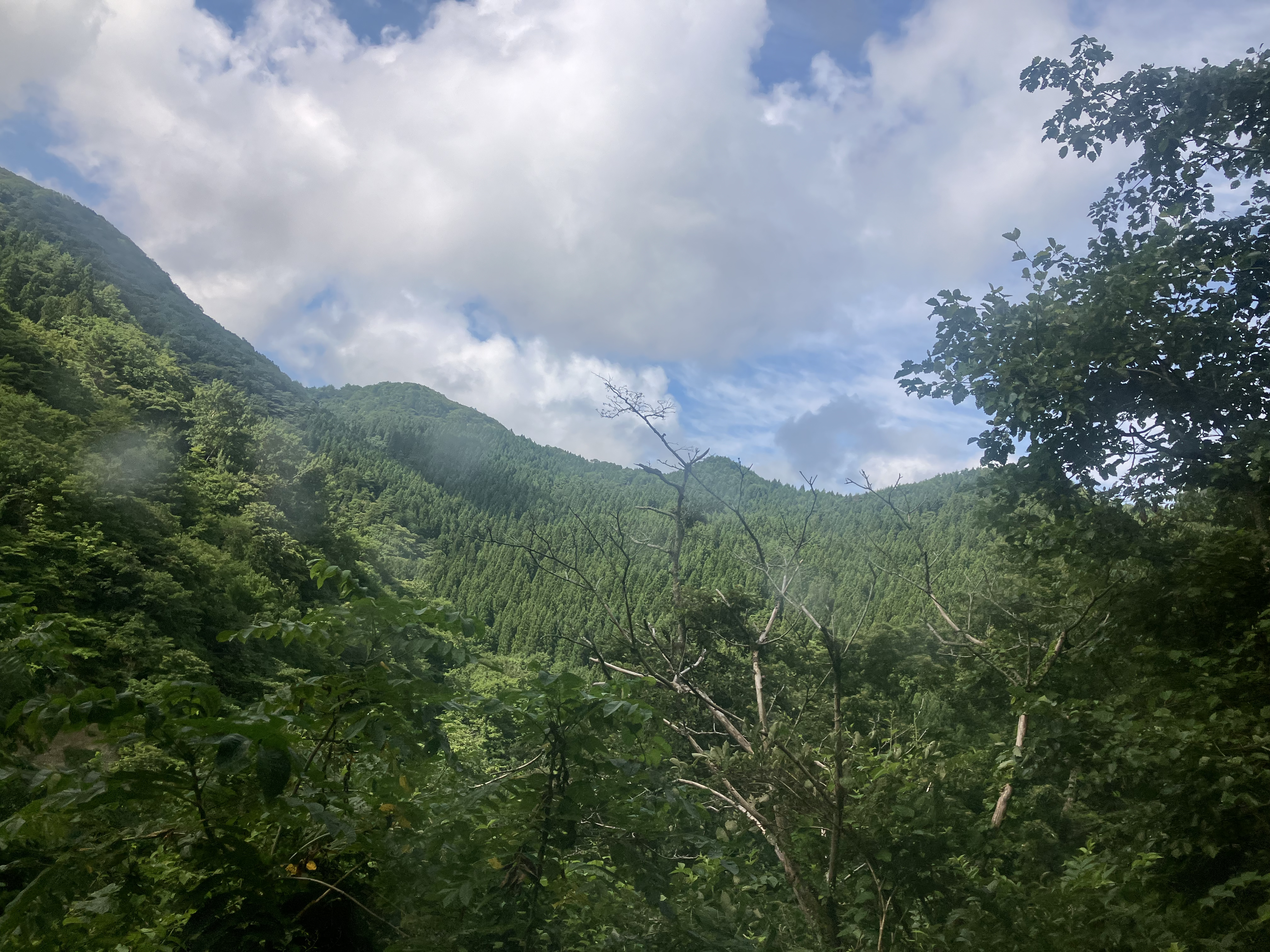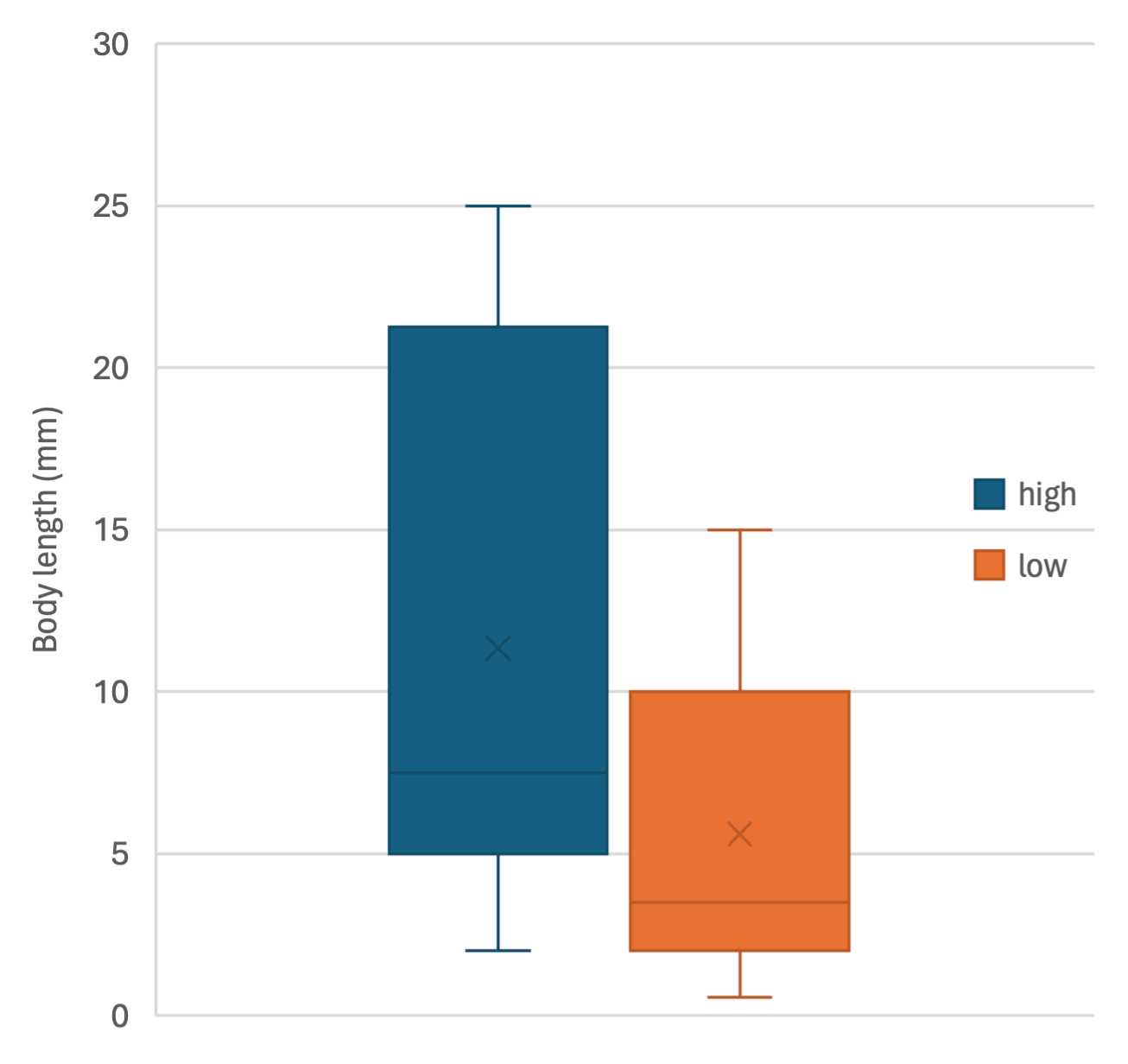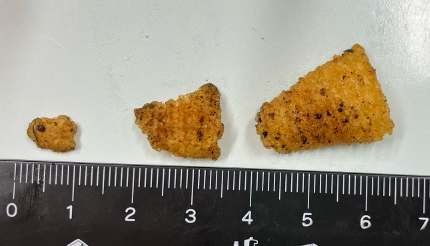新潟の佐渡にいる蟻が運ぶ食べ物について
10 Sep 2024
There are several field work courses at Tokyo Metropolitan University where I study biology. One of them is for going to Sado island, located offshore Niigata prefecture in northern Japan. During the one-week course, students had a few tasks each day each of which we will write a report later. On the last day we were given a chance to have our original experiment by considering the difference in attitude on a mountain (we didn’t have to tho).

A scenary from data collection site.
To prepare for the experiment, each of us had to come up with an idea and present the experiment plan with the rationale for doing it within a few hours. Most of us squeezed our brain. Now, my idea at that time was something to do with ants because I’m kind of betting on them recently for their potentials. By the way, thre were only a few of us having animals in our experiments including me, and others preferred plants.
Anyways, my mini research was themed as like ants’ foraging behaviours compared between different alttitudes on a mountain. My research plan was originally to conduct experiments where I test ants whether they carry a certain type of food or not. If so, I hypothesise that the higher attitude they forage, the smaller food they carry. I stipulated that because they would not be as active when it’s cold as they are when it’s warm. (Of course, being too warm would also cause laziness but it’s not considered at this momoment.)
I presented my plan to teachers and folks. The first impression for a teacher told me that things probably wouldn’t go taht well, so I should aim for more accessive data. A suggestion was to make observations and collect ants carrying some kind of food with a note about what they carried. It turned out that I did both of the plans – one was to know what ants were carrying, and the other was to experiment the size of food they carry.
On the day of collecting data for the mini-self-organised research, I had a lot of help by my folks and a van driver to find ants carrying food. One of teachers helped me with identifying ant species. So, the result was this below.
| sp. (number of individuals carrying the food) | Food | Size (mm) |
|---|---|---|
| formica hayashi | Fly | 20 |
| Straight abs skinny long leg | 25 | |
| formica hayashi | 6 | |
| aphaenogaster famelica | 7 | |
| aphaenogaster famelica (2) | Straight abs triangle | 16 |
| Juvenile beetle looking | 2 |
| sp. (number of individuals carrying the food) | Food | Size (mm) |
|---|---|---|
| formica hayashi | nylanderia flavipes | 2 |
| Bordered beetle damaged | 10 | |
| Pill bug (2) | 5 | |
| Rough woodlouse (2) | 10 | |
| wing | 15 | |
| Protein with sands | 2 | |
| formica hayashi (2) | Cricket like damaged | 7 |
| formica hayashi (3) | Worm | 7.3 |
| Caterpillar | 1.7 |
Table 1. Types of food ants were carrying at high (upper table) and low (lower table) attitude respectively.
I saw that foods at the lower attitude were basically ground-dwelling animals or damaged flying ones. That’s because those foods/animals cannot go higher attitude. And at the higher attitude, those who can escape from lower attitude survivial will eventually foraged when they pass away. Bold texts indicate that they had wings while other foods did not or had damaged wings. In addition, I compared the size as shown below. I was rushing to measure food body size, and the “body size” is not even precisely defined. But, we can probably get a gist of the difference.

Figure 1. Size of food compared.
| high (mm) | low (mm) | |
|---|---|---|
| Mean | 11.33 | 5.611 |
| Variance | 81.50 | 24.14 |
Table 2. Stats for compaing the body size (roughly) of the foods…
There was no statistically significant difference between the size of food at higher attitude and that of the lower (alpha value of 0.05). Maybe I should have taken their weights as well.
Talking of the other experiment to see the size of the food carried, I fed them with Tongaricorn (Japanese famous snack) like this. This snack was pretty much guaranteed to trap ants by previous ant collection task done before the self-organised research.

I allowed ants to carry a piece for 15 cm and counted how many ants contributed to carrying it. I did not have enough data for comparision but what I found was basically bigger ant species (Formica hayashi) foraged alone whereas smaller ones (Aphaenogaster famelica) cooperated. Very small ones (Nylanderia flavipes) did not even carry the piece but they bit off the piece and carried little by litte.
Another finding was that two species (Myrmica kotokui and Camponotus sp.) did not show almost no interests in a food piece. Video as evidence…
I did not have any means of confirming the mechanism of the phenomenon at that time, but later on I found an article which talks about neural structure varying between different ant castes including the sensory regions (Muscedere & Traniello, 2012). It might gives me a hint to know why I could witness the behaviour.
To wrap up, this is not a scientific report (which I will be writing in a week) while still my little record from beautiful Sado island. So I hope you just enjoyed reading this blog about my as small finding as an ant but possibly as important as an ant! a lot of “a”s haha.
References
Muscedere, M. L., & Traniello, J. F. (2012). Division of labor in the hyperdiverse ant genus Pheidole is associated with distinct subcaste-and age-related patterns of worker brain organization. PLoS One, 7(2), e31618.